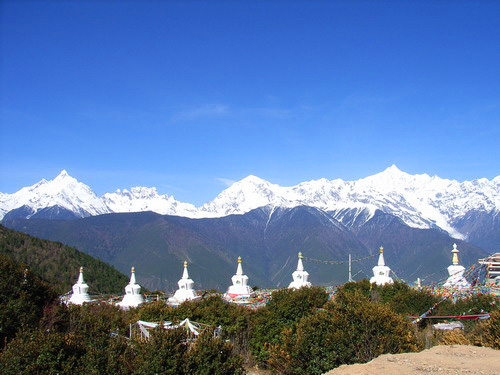|
Lanping Dialect
Lanping Bai and Pumi Autonomous County (; Bai: Ketdant Baifcuf Pupmipcuf zibzibxiand) is located in Nujiang Lisu Autonomous Prefecture, Yunnan province, China. Administrative divisions Lanping Bai and Pumi Autonomous County has 4 towns and 4 townships. ;4 towns ;4 townships Climate Like most of Yunnan, Lanping has a dry-winter subtropical highland climate (Köppen climate classification: Cwb ) See also *Three Parallel Rivers of Yunnan Protected Areas The Three Parallel Rivers of Yunnan Protected Areas () is a UNESCO World Heritage Site in Yunnan province, China. It lies within the drainage basins of the upper reaches of the Jinsha (Yangtze), Lancang (Mekong) and Nujiang ( Salween) rivers, in ... - Unesco World Heritage Site References External links Lanping County County-level divisions of Nujiang Prefecture Bai people Pumi people Autonomous counties of the People's Republic of China {{Yunnan-geo-stub ... [...More Info...] [...Related Items...] OR: [Wikipedia] [Google] [Baidu] |
Autonomous County
Autonomous counties () and autonomous banners () are county-level autonomous administrative divisions of China. The two are essentially identical except in name. There are 117 autonomous counties and three autonomous banners. The latter are found in Inner Mongolia Autonomous Region and the former are found everywhere else. Maps List History Former autonomous counties of China See also * External links ChinaDataOnline.org website {{authority control C * Counties of China China, PRC Autonomous ... [...More Info...] [...Related Items...] OR: [Wikipedia] [Google] [Baidu] |
Bai People
The Bai, or Pai ( Bai: Baipho, (白和); ; endonym pronounced ), are an East Asian ethnic group native to the Dali Bai Autonomous Prefecture of Yunnan Province, Bijie area of Guizhou Province, and Sangzhi area of Hunan Province. They constitute one of the 56 ethnic groups officially recognized by China. They numbered 1,933,510 as of 2010. Names The Bai people hold the colour white in high esteem and call themselves "Baipzix" (', Baizi, 白子), "Bai'ho" (', Baihuo, 白伙), "Bai yinl" (', Baini, 白尼) or "Miep jiax". ''Bai'' literally means "white" in Chinese. In 1956, the Chinese authorities named them the Bai nationality according to their preference. Historically, the Bai had also been called Minjia (民家) by the Chinese from the 14th century to 1949. The origin of the name Bai is not clear, but scholars believe that it has a strong connection to the first state Bai people built in roughly the 3rd century AD. This state, called ''Baizi Guo'' (白子國, State of Ba ... [...More Info...] [...Related Items...] OR: [Wikipedia] [Google] [Baidu] |
Three Parallel Rivers Of Yunnan Protected Areas
The Three Parallel Rivers of Yunnan Protected Areas () is a UNESCO World Heritage Site in Yunnan province, China. It lies within the drainage basins of the upper reaches of the Jinsha (Yangtze), Lancang (Mekong) and Nujiang ( Salween) rivers, in the Yunnan section of the Hengduan Mountains. Overview Geography The protected areas extend over 15 core areas, totalling 939,441.4 ha, and buffer areas, totalling 758,977.8 ha across a region of 180 km by 310 km. Here, for a distance of over 300 km, three of Asia's great rivers run roughly parallel to one another though separated by high mountain ranges with peaks over 6,000 meters. After this area of near confluence, the rivers greatly diverge: the Nujiang River becomes Salween and empties out at Moulmein, Burma, into the Indian Ocean, the Lancang becomes the Mekong and south of Ho Chi Minh City, Vietnam, empties out into the South China Sea and the Yangtze flows into the East China Sea at Shanghai. Selected ... [...More Info...] [...Related Items...] OR: [Wikipedia] [Google] [Baidu] |
China Meteorological Administration
The China Meteorological Administration (CMA) is the national weather service of the People's Republic of China. The institution is located in Beijing. History The agency was originally established in December 1949 as the Central Military Commission Meteorological Bureau. It replaced the Central Weather Bureau formed in 1941. In 1994, the CMA was transformed from a subordinate governmental body into one of the public service agencies under the State Council.CMA.gov history Meteorological bureaus are established in 31 , |
Köppen Climate Classification
The Köppen climate classification is one of the most widely used climate classification systems. It was first published by German-Russian climatologist Wladimir Köppen (1846–1940) in 1884, with several later modifications by Köppen, notably in 1918 and 1936. Later, the climatologist Rudolf Geiger (1894–1981) introduced some changes to the classification system, which is thus sometimes called the Köppen–Geiger climate classification system. The Köppen climate classification divides climates into five main climate groups, with each group being divided based on seasonal precipitation and temperature patterns. The five main groups are ''A'' (tropical), ''B'' (arid), ''C'' (temperate), ''D'' (continental), and ''E'' (polar). Each group and subgroup is represented by a letter. All climates are assigned a main group (the first letter). All climates except for those in the ''E'' group are assigned a seasonal precipitation subgroup (the second letter). For example, ''Af'' indi ... [...More Info...] [...Related Items...] OR: [Wikipedia] [Google] [Baidu] |
Subtropical Highland Climate
An oceanic climate, also known as a marine climate, is the humid temperate climate sub-type in Köppen classification ''Cfb'', typical of west coasts in higher middle latitudes of continents, generally featuring cool summers and mild winters (for their latitude), with a relatively narrow annual temperature range and few extremes of temperature. Oceanic climates can be found in both hemispheres generally between 45 and 63 latitude, most notably in northwestern Europe, northwestern America, as well as New Zealand. Precipitation Locations with oceanic climates tend to feature frequent cloudy conditions with precipitation, low hanging clouds, and frequent fronts and storms. Thunderstorms are normally few, since strong daytime heating and hot and cold air masses meet infrequently in the region. In most areas with an oceanic climate, precipitation comes in the form of rain for the majority of the year. However, some areas with this climate see some snowfall annually during winter. ... [...More Info...] [...Related Items...] OR: [Wikipedia] [Google] [Baidu] |

